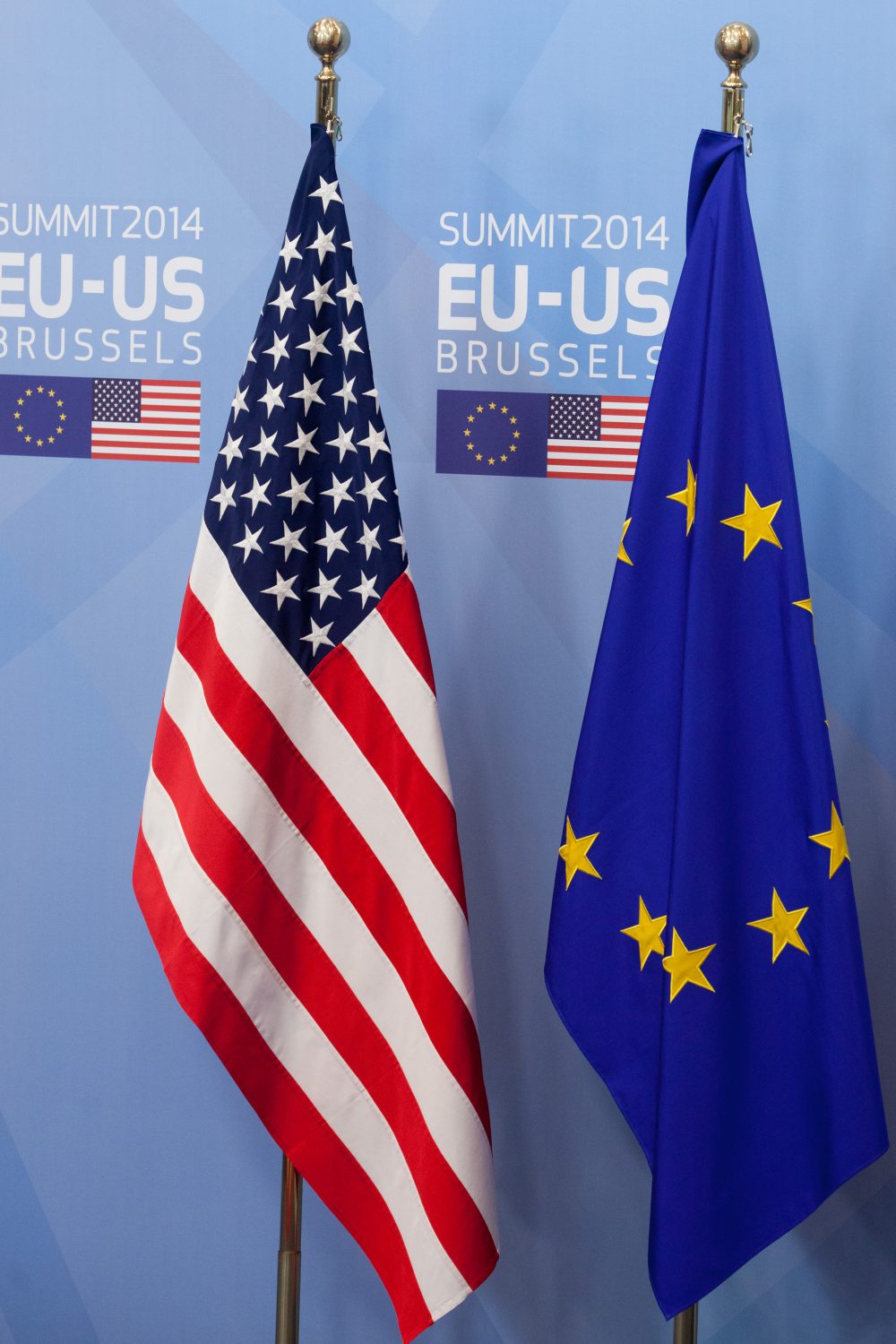It is rare to see coalitions that cross entrenched political lines in the United States’ two-party system; Democrats and Republicans typically adhere to classical party dogma and rhetoric in an increasingly uncooperative congressional climate. However, this past June was host to unprecedented political wrangling on behalf of President Obama, as he transcended Democratic boundaries and enlisted the support of Republican leaders in order to secure Trade Promotion Authority (TPA), a fundamental step in the pursuit of a record multilateral free trade agreement in the Pacific, the Trans-Pacific Partnership. What is perhaps most exceptional about the series of events is the lengths to which the President went to acquire TPA, even alienating some powerful players in his party and forging new relationships with traditionally disapproving Republicans. This turmoil both within and beyond Washington has left many feeling quizzical about the proposed agreement and its nightmarish litany of small print and implications—what does this deal mean for Americans? What does it mean for the US’ role globally? In particular, why is Obama pursuing the TPP so adamantly?
The TPP is a multinational regional free trade agreement encompassing 12 countries along the rim of the Pacific Ocean that collectively account for 40% of the global GDP. As of June 2015, these countries include the US, Chile, Japan, Brunei, Australia, Vietnam, Malaysia, Mexico, Peru, Singapore, New Zealand, and Canada. The World Trade Organization (WTO) has failed to update its regulations for the past two decades, and has not kept pace with radical changes to supply chains, production and trade paradigms. Even more importantly, the WTO has not provided the enforcement mechanisms necessary to ensure that fair trade policies are being followed by all of its adherents. Enter the impetus for a new set of global trade regulations, designed to stimulate economic growth while deepening political ties in this sensitive region. The treaty’s architects allege that the TPP will increase US competitiveness and provide global income benefits, estimated at $77 billion per year by 2025 for the US alone, and an additional $123.5 billion in US exports per year. Specific provisions aim to expand vital US sectors such as services and agriculture while providing greater intellectual property protections.
All of this sounds fabulous, so who would disagree? It a bizarre twist of events, the ideological divergence within both the democratic and republican parties was so acute as to create some of the most unconventional political realignments. Massachusetts Senator Elizabeth Warren has emerged as one of the TPP’s most vocal critics and spearheaded the opposition to the TPA. On the other hand, Obama found an unusual ally in Kentucky Senator Mitch McConnell, who rallied Republicans in support of the bill, an essential advance toward the TPP. Despite factions within the Republic Party opposed to granting the President any additional powers, the party largely supports initiatives that provide potential benefits to businesses. Democrats, historically more tied to unions, are loath to pass legislation that could damage workers’ rights and negatively impact employment. Politicians on both sides of the fence have come out with fairly convincing arguments against large-scale free trade agreements like the TPP. In particular, they oppose specific provisions like the Investor-State Dispute Settlement mechanism that allows companies to pursue legal action against foreign governments through international arbitration procedures. Given the severity of the controversy and legitimate arguments against the TPP, perhaps the most important question becomes, why is Obama pursuing this treaty so adamantly?
A more cynical view contends that Obama is heavily influenced by his advisors, who comprise the US “foreign policy elite.” Essentially, the US adopted a policy at the close of World War II that would allow Japan—and later the Asian Tigers—access to US markets as well as inclusion under the US defense umbrella in exchange for military bases and geo-political support in the region. The underlying assumptions were that the US market would remain open while Asian markets would be largely closed or controlled, with the expectation that the US would transfer technology and jobs to Asia. It’s possible that leaders in Washington underestimated Asia’s future ability to rival the US economically and technologically, but the prevailing defense doctrine demanded—and still does—that military conflicts be kept as far as possible from US soil. This objective has always trumped economic and trade issues. Compounded with the dominant neoclassical economic doctrine that free trade is always beneficial even when not reciprocal, these beliefs have become a sort of religion among US foreign policy elite, and have coalesced into a dogma that is applied to the betterment of big businesses, frequently at the expense of the greater US economy. With limited international experience restricted to a few years in Indonesia as a child, Obama relies on these advisors to shape foreign and trade policy, one could argue that these themes are at the heart of the TPP: an effort to preserve an antiquated world order based on US hegemony in the Pacific. Current conditions in Asia are incompatible with previous arrangements and necessitate a reevaluation of international relations in Asia. And while the TPP will certainly preserve US relevance there, it will achieve this by altering the framework in which the players interact rather than extending antiquated scenarios. Asia has developed, and US foreign policy should mature commensurately to prevent the country from being sidelined from one of the most vibrant economic zones.
WHY PIVOT?
After two costly wars in Iraq and Afghanistan spanning more than a decade, prevailing attitudes in the US would refocus attention internally, faraway from foreign theaters. But this is a misguided attitude: the US does not exist in a vacuum, and engaging foreign governments and economies is essential for preserving the quality of American life. It is not a matter of neglecting internal issues by reorienting resources toward the Asia-Pacific; not only does zero-sum logic not apply, but the interconnectedness of national economies in a globalized world elevates the need to engage foreign countries in order to preserve domestic stability. The TPP is the US’ in to Asia. It wants to be at forefront to author the new rules for not only international trade, but also to project its soft power and promote American values.
Asia’s role in the global community cannot be understated. Home to more than half the world’s population, its sheer size alone commands attention. In addition, its meteoric economic rise—actuated by China—have propelled it to the forefront of global markets and sealed its position in supply chains worldwide. There is the world’s largest democracy (India) as well as the most populous Muslim majority country (Indonesia). The second and third largest economies in the world are found there—China and Japan—but analysts predict that Asia will house four out of the 10 largest economies by 2050 (China, India, Indonesia, and Japan), which will account for 50% of the world’s output. We also cannot ignore the presence of 7 of the 10 largest armies. In a lethargic global economy plagued by ambiguity, Asian nations embody the most promising opportunities for growth. Commensurate with Asia’s enormous potential, however, are its deep structural instabilities caused by volatile international relations, expansionist trends, natural disasters, and other nontraditional security threats like human trafficking. As the number one destination for US exports, it is advisable for the US to safeguard the region’s social and economic health in an effort to nurture its own.
How the TPP will aid pivot
Obama knows that Asia’s success hinges on the US’ stabilizing influence; its military presence has bolstered stability in the region for decades, and recommitment to expanding this influence is necessary for Asia’s continued prosperity. The central purpose of the TPP is to deepen military alliances in an effort to defuse conflicts, maintain maritime access, subdue extremism, and provide humanitarian assistance in the event of natural disasters. The concentration of US naval vessels needs to be reorganized, but this cannot be achieved without additional bases to dock the ships and the goodwill of local governments. A multilateral trade agreement will not only open more dialogue between the US and TPP signatories, but it will also foster high-level human discourse among the other partners, many of whom are still suffering from unhealed wounds. Improved cooperation between countries such as Japan and South Korea is critical for soothing alarming nationalistic attitudes and their ability to act cohesively to ameliorate crises around the globe, in particular related to North Korea’s wanton aggression.
The single greatest omission from the TPP is China. Speculation regarding the slight is fodder for another discussion, but suffice it to say that one of the TPP’s anticipated aims is to curtail China’s influence in the Pacific and counter their massive economic dominance. No single player can conceivably challenge China, but banded together by favorable and stimulating trade and investment conditions, the result is more powerful than the sum of the constituent parts. The US has a long tradition in the Asia-Pacific region, and as the only global power with reach in Asia yet lacking territorial ambition; it is ideally positioned to facilitate an economic coalition. Beijing has enjoyed considerable diplomatic success as of late, and is tirelessly spearheading regional and global initiatives to support the continued development of emerging economies independently of established Western institutions, such as the World Bank. It would be ill advised for the US to remain idle and allow its role to be marginalized; the TPP provides an ideal solution to amass support under the banner of democratic ideals in a region vulnerable to human rights and environmental abuses. The ultimate goal is not to exclude China from international system, but to create a set of circumstances that encourages the giant to adopt better business practices and trade policies that reflect international standards. In particular, serious intellectual property rights violations in China need to be remedied, and patent extensions are a major focal point of the TPP. Although greater actions are needed to correct the severe imbalances plaguing the US-China economic relationship, the TPP is an important step in raising the regional support the US needs to challenge China legitimately.
Ultimately, every party stands to benefit from enduring stability and invigorated economic exchanges; China and others have as much to gain from the TPP as its direct signatories. A prosperous Pacific will do more to contribute to prosperity across the globe, especially as Asian nations assume greater roles internationally. Dependence on foreign natural resources will increase proportionately with gains in livings standards, and a greater domestic consumer bases will drive up demand for energy. The US must deescalate its military presence in the Middle East in order to dedicate resources to Asia, but this should not be viewed as defeated abandonment but an opportunity to enlist the help of new allies in joint resolutions to stabilize the region to everyone’s benefit. Asian countries can commit more resources to the region and exert a positive influence, much like Japan’s backing of civil society development in Afghanistan. In addition, a cohesive Asia-Pacific region can provide diplomatic leverage for critical negotiations, such as the Iranian nuclear deal. The US can effectively act on two different fronts to pursue international harmony that encompasses the entire Eurasian region.
One key element that cannot be ignored is the TPP’s centrality to the Obama Administration’s “pivot to Asia”; it has become a defining legacy of Obama’s presidency. Pursuant to a divided political party sacrificed in order to give the TPP a fighting chance, Obama may well have lost favor with his peers due to inflammatory rhetoric. The secrecy shrouding the TPP negotiations have also not bolstered his popularity among voters or congressional leaders. The fleeting support he garnered from Republicans is superficial, and is not likely to constitute genuine productive relations for the remainder of Obama’s term. Thus, Obama will suffer a significant loss of power if he fails to forge the TPP. The more calamitous consequence would be the perversion of the failure as an indicator that US power is waning unequivocally, a popular Chinese attitude. Such beliefs are simultaneously the source and nourishment for alarming nationalistic posturing and China’s desire to vindicate its “Century of Humiliation.” The prospect of losing power so dramatically within and beyond his country is certainly motivation enough to focus Obama’s attention on safeguarding this important aspect of his legacy.
CONCLUSION
Critics are not wrong: some sectors will suffer as a result of the TPP, but everyone stands to benefit from a continued US presence in the most vibrant economic region in the world. This is the choice that Obama made. Well aware that isolationism is not a feasible option in the modern world, he made the difficult decision to safeguard America’s future by investing in its access to a vital framework that will only continue to grow in importance. The US has too much to lose by abdicating influence over the authorship of a new world order, and so do many of its allies. Hopefully Obama can usher in practice/precedent… rebalance of power that acknowledges new roles of Asian countries in the international area invested in mutual peace and prosperity. The agreement’s value has less to do with trading goods, but trading goodwill: the TPP’s significance arises from its strategic value and potential to reinvigorate US influence in the Pacific.



















